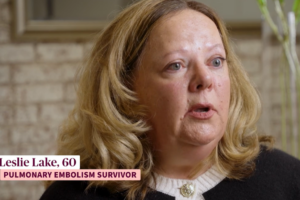Blood Clot Information
Blood clots do not discriminate by age, gender, ethnicity or race. They can affect anyone — infants and young children to teens, young moms and dads, middle age adults and senior citizens. Across the country and around the world, elite athletes, public servants, musicians, doctors, nurses, business associates, and many wonderful people from all walks of life experience blood clots. A blood clot is diagnosed once every minute.
And, sadly – once every six minutes someone dies from a blood clot.
Blood clots lead as the number 1 killer of new mothers during and after childbirth. They strike women across the life span; -from young women who take hormonal birth control to post-menopausal women who take hormone replacement therapy. They affect people treated for cancer and other chronic conditions, and people undergoing joint replacement and other surgical procedures. Genetic predisposition to blood clots, called “thrombophilias” can trigger them, or other risk factors, such as immobility. More than 5 million Americans who live with Atrial Fibrillation face a heightened risk of blood clots in their heart. Blood clots in the heart can travel to the brain and cause stroke and death. As the population ages, many of these risks for life-threatening blood clots increase, and the public health challenge also increases.
Fortunately, we know how to prevent blood clots. We also know how to prevent poor outcomes (death, morbidity, and recurrence) in blood clots that do occur with early and accurate diagnosis and management. We can prevent blood clots in hospitalized patients who face an increased risk of blood clots with appropriate prevention measures. We need more awareness among health care professionals and patients to facilitate the needed early and accurate diagnosis, management, and prevention
Appropriate prevention can result in a significant reduction in blood clots, healthcare burden, economic impact and death. Today, blood clots lead as the number one cause of unnecessary hospital readmissions. This costs more than an estimated $10 billion of the total $16 billion spent on all treatment of blood clots in hospitals nationwide. If we eliminate this unnecessary spending, and ensure improved health care outcomes post-surgery, we can save lives and achieve huge health care cost savings.




